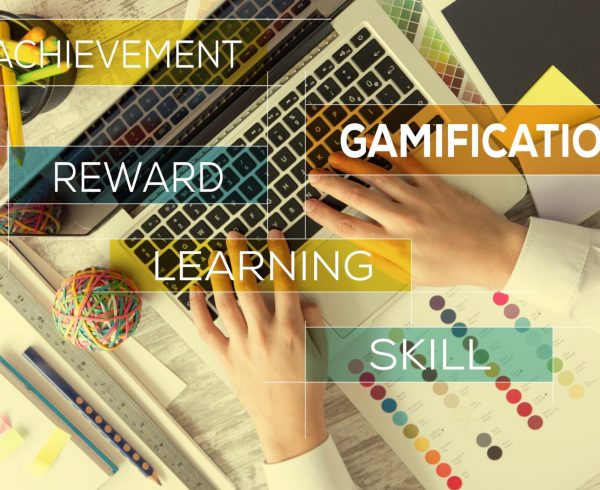Let’s talk about gamification and employee engagement
Do you know that over a quarter of your workforce comes with a high turnover risk? A third of these employees are motivated and talented over-achievers who work day in and day out to contribute to your company’s growth.
These employees know their worth and are aware of a plethora of opportunities available to them should they choose to jump ship. In the wake of this trend, the importance of delivering on employee engagement cannot be stressed enough, especially when you factor in the fierce competition in landing top talent and the steep cost of training new hires.
Effective employee engagement strategies can not only help mitigate the turnover risk but also improve efficiency and productivity, which ultimately translates to bigger profit margins. More importantly, employees with a sense of engagement are happier in their personal and professional lives.
The corollary benefits such as higher profit margins, greater innovation and a mentally sound workforce are far too compelling to not invest in employee engagement. Yet, many companies struggle to be effective in this space.
Table of Contents:
- Some of the Key Challenges Posing as Roadblocks & Why Gamification is a Bankable Solution
1. Challenges in Employee Engagement
2. Gamification and Employee Engagement
Let’s look at some of the key challenges posing as roadblocks in this journey and why gamification is a bankable solution.
Challenges in Employee Engagement
After many years of debates and deliberations, most organizations today recognize the importance of employee engagement as a strategic tool in their growth story. Some high-ranking officials still find it difficult to implement employee engagement processes.
Here’s a look at some of the key challenges that post a hurdle in cultivating this asset –
-
Lack of Aligned Efforts:
Despite the recognition of the value of employee engagement, most organizations struggle to inter-weave tangible steps in this direction with business operations.
-
Lack of Financial Support:
Third-party investors and stakeholders often fail to see the importance of engagement efforts, leaving several pilot projects in this space cash strapped.
-
Saturated Communication Channels:
Cultivating seamless communication channels is a pre-requisite for employee engagement that often gets lost in the humdrum of our information-saturated world.
-
Lack of Engaging Leadership:
A leadership that delivers on transparency and inspirational communication is often a missing link in the chain.
-
Lack of Cohesive Initiative:
While one team or leader in the organization may be going above and beyond to ensure employee engagement, it cannot yield results if a cohesive focus is lacking.
Gamification and Employee Engagement
Gamification has become ubiquitous in our lives. Whether it is wearables like fitness trackers that turn the pursuit of a fit body into a game or gamified productivity apps that turn everyday tasks into interactive games, the element of fun is constantly used as motivation for people to push boundaries.
Naturally, gamification has emerged as a raging trend. The pursuit of upskilling, achieving goals or meeting targets is quantified through games that offer points, rewards, badges, and more – creating a sense of instant gratification.
Here’s how it can be leveraged to its optimal potential:
1. Upskilling:
One of the most relevant use cases of gamification is upskilling – a necessary survival tool in today’s cut-throat environment that many employees continue to perceive as an added burden to their professional obligations.
Gamification of platforms of learning can go a long way in getting the workforce invested in the process of learning new skills. Besides, learning through an interactive game can help improve retention and outcome. Here’s all you need to know about Gamification in the Workplace: Design, Development, And Implementation.
2. Efficient Customer Support:
Efficient customer service and after-sales support is the key to business growth in today’s competitive milieu.
Introducing gamification can help boost employee performance in this area manifold as the lure of achievements and rewards motivates them to deliver on efficiency and quality while innovating new solutions to make their processes more effective and better than the competing teams. Here are the Top 10 Advantages of Game-Based Learning.
3. Boosting Sales:
The rewards for getting all the steps of the process right to make that final sale can be a big motivating factor that lends impetus to collaborations between sales professionals and teams.
4. Fostering Teamwork:
Gamification strategies can blunt down individual aspirations and promote team spirit, as the team that stays together wins together. Through a system of rewards and victories, employees can be encouraged to work as teams, share information, and learn from one another while working on projects together. Here’s a list of 5 Effective Strategies for Gamification at Work.
5. Stronger Marketing Game:
Imagine if employees could earn a point for every social media share or could collect rewards on meeting marketing milestones. They would throw their full weight behind the marketing campaigns that they develop and promote them more aggressively. This is a win-win in terms of deliverables as well as employee engagement.
6. Sound Inventory Management:
Inventory management is one job profile where the struggle to keep the employees engaged in mundane, run-of-the-mill tasks is very real. Using gamification and rewards can make a huge difference in bringing about efficiency and engagement in these processes.
7. Make HR Processes Effective:
Human Resources can also leverage gamification to track and review performances, offer peer appreciation, foster leadership, and promote more holistic communication with the rest of the workforce.
8. Enhancing Productivity and Innovation:
From product development to testing and roll-out, using gamification at every step of the way can motivate employees to deliver their part in a project in a timely, efficient, and collaborative manner. Similarly, using games and rewards for ideation and brainstorming can keep the employees invested in exploring innovative ideas and thinking out of the box.
9. Onboarding:
Effective onboarding is vital to the growth of any organization, and a simple introduction with game-based elements can make this process extremely impactful. Using leaderboards, badges, and rewards can be a great motivation for new employees to not only sign up for onboarding training modules but also get the most out of the program. Here’s more about Gamification in Corporate Training: Your Checklist for Training Success
10. Enhancing Performance:
Gamification can also serve as a driving force to enhance employee performance. For instance, gamification of an internal system, like the CRM, can result in enhanced employee engagement with the program. Adding video game-like elements to everyday processes can take the monotony out of the equation and make employees follow through.
11. Better Communication:
Employees need constant communication and feedback from their bosses to do their jobs well, but this feedback can often be viewed as critique and lead to disengagement. By developing a model based on fun and engaging games, employees can be made more receptive to feedback without affecting their morale. Click here to learn Is Gamified Learning More Effective in the Modern Workplace
12. Institutionalizing Corporate Culture:
Gamification and employee engagement is a rare combination that helps cultivate a culture of an invested workforce across projects, programs, and departments in a company. It also opens up new opportunities for employees to get involved in shaping the future of their organization.
Related:
- How to Setup Effective Game-Based Learning for Enterprises
- Gamification – The Secret Sauce for Employee Engagement?
- 7 Tips to Create Custom E-Learning Content on a Budget
- 5 Reasons Why You Need an eLearning Portal and 5 Steps to Build it
- How to Create Online Course Modules for Employee Training
- Everything You Must Know Before Selecting Gamification Services
- Top eLearning Development Companies for Enterprises & SMBs











